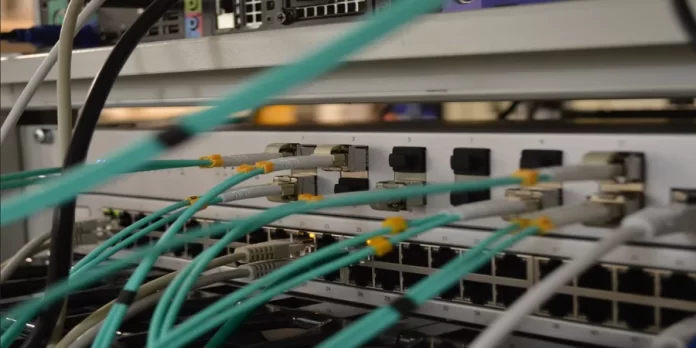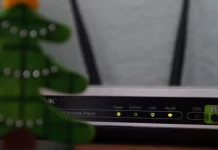The modern world is in constant evolution. And to keep up, it’s necessary to pay attention to various interesting new or improving old technologies. One of these technologies is PoE.
What do you need to know about a PoE switch
PoE is a technology that allows switches to transmit power and data simultaneously over a single Ethernet cable. As the number of networking devices grows, the benefits of PoE switches become increasingly apparent. PoE switches allow a wide variety of PoE devices such as IP phones, IP cameras, access points and more to be efficiently connected in all scenarios.
Nowadays, managed PoE switches are becoming more and more popular among network users. Many people are more likely to choose a managed switch with PoE functionality over an unmanaged switch. So why, is there any particular reason? So, here’s about the PoE switch.
What are managed and unmanaged switches
You may know that a network switch can be divided into two types at the management level: a managed switch and an unmanaged switch. In fact, a managed switch is a switch that allows you to access one or more interfaces in order to configure or manage features such as STP, port speed, VLAN, etc. This can give you more control over your LAN traffic and offer additional features to manage that traffic.
An unmanaged switch is a device that is similar in functionality to a hub, i.e. it transmits data packets from one port to the others. However, unlike a hub, a switch transmits data only directly to the recipient and not to all devices, because the switch has a MAC-address table, thanks to which the switch remembers which port a device is on.
One of the main advantages of a managed switch is the ability to partition the local network using VLANs. That is, in addition to filling the MAC table, the switch adds information about the belonging of the received frame to a certain network segment. Accordingly, at a minimum, you get rid of a lot of broadcast traffic, set the availability of devices to a particular subnet, and increase security.
What does PoE mean
PoE actually means “Power over Ethernet”. PoE switch is a network switch with the function of powering connected devices over twisted pairs, such as IP cameras, wireless access points, network hubs, and other devices to which it’s undesirable or impossible to wire the power cable. The main advantage or feature of PoE is to deliver data and power simultaneously over a single Cat5e or Cat6 Ethernet cable. It eliminates the need for AC or DC power supplies.
According to the standard IEEE802.3af/at the output voltage, the PoE ports of the switch is 48 V, and all peripheral devices such as IP cameras, access points, etc. have a voltage of 12 V, so in each of these devices with PoE support is an additional voltage converter from 48 V to 12 V.
What’s more, remote installation costs less than fiber. PoE Switch can work with a variety of networking equipment, for example at the same time can be connected to the ports of PoE devices, and at the same time the usual network cards of PCs or routers. The type of connected device is automatically detected and the power is supplied according to the type of device.
Why is it better to use a managed PoE switch
PoE isn’t recommended for sending network data over long distances or for extreme temperatures unless there’s an industrial designation. It’s often seen in a Gigabit Ethernet Switch, and it’s mostly used with IP cameras, VoIP phones, and WAPs (wireless access points). Here are the reasons why you should use a managed PoE switch.
There are many fine-tuning options available on a managed switch. The devices are designed for complex tasks, building large branching systems that include different technical characteristics of the equipment. Modern PoE-switch is a full-fledged element of a complex security system.
What are the benefits of PoE switch
The technology has many advantages:
- A POE can be helpful if the equipment is located in an unplugged, hard-to-reach location. A single cable through the port provides communication, power and control of the camera or other device.
- The elimination of a separate power line from the system saves on the maintenance of all equipment.
- Safety in use is due to the maximum PoE voltage of 57 volts. The employee maintaining the system won;t need a permit to work with electricity.
You have also to be aware that the PoE switch must be designed to provide power to all connected equipment. The power connected at any one time mustn’t exceed the maximum allowable power for the unit. Exceeding it will result in its damage.
The power that can be connected is specified in the technical specifications of the unit. For example, an 8-port PoE with 150 W of power can be taken away by 130 W of connected devices. With the 802.3 standards, you can connect 8 devices with 15.4 watts each. However, with an 802.3 in the system, 30 W appliances can only be powered from 4 ports.
PoE vs Non-PoE switch: which one to choose
Many users may be confronted with this question. After all, a switch without PoE can also get PoE by installing an optional PoE injector. However, a PoE switch does have some advantages.
- Flexibility:
- The PoE switch is powered through your existing PoE network infrastructure and eliminates the need for additional wiring.
- This gives you the flexibility to use the switch wherever you need it.
- Good performance:
- The PoE switch is designed with advanced features such as high performance hardware and software, automatic PoE compliance detection, high network security and adaptability to the environment.
- This provides better performance for users.
- Cost-effective:
- With the PoE switch, users don’t need to purchase and deploy additional electrical wires, outlets or PoE injectors.
- Consequently, it significantly saves installation and maintenance costs.
In fact, the choice of a switch depends entirely on your actual needs. In short, a simple and cost-effective PoE is enough for a home network. If you don’t have a network with devices that support power over an Ethernet cable, a regular switch is fine.





